The Sacred Valley was the heart of the Inca Empire and is home to many of its most impressive ruins. There are many tours you can take of the Sacred Valley. The main ruins are Chinchero, Sacsayhuman, Moray, Maras salt flats, Ollantaytambo, Pisac and Tipon. You can visit one for about S/.70 (US$25) or you can purchase an all-inclusive Cuzco tourist ticket for about S/.130 (US$45). The tourist ticket will also get you into museums around Cuzco. It is the best deal if visiting multiple places.
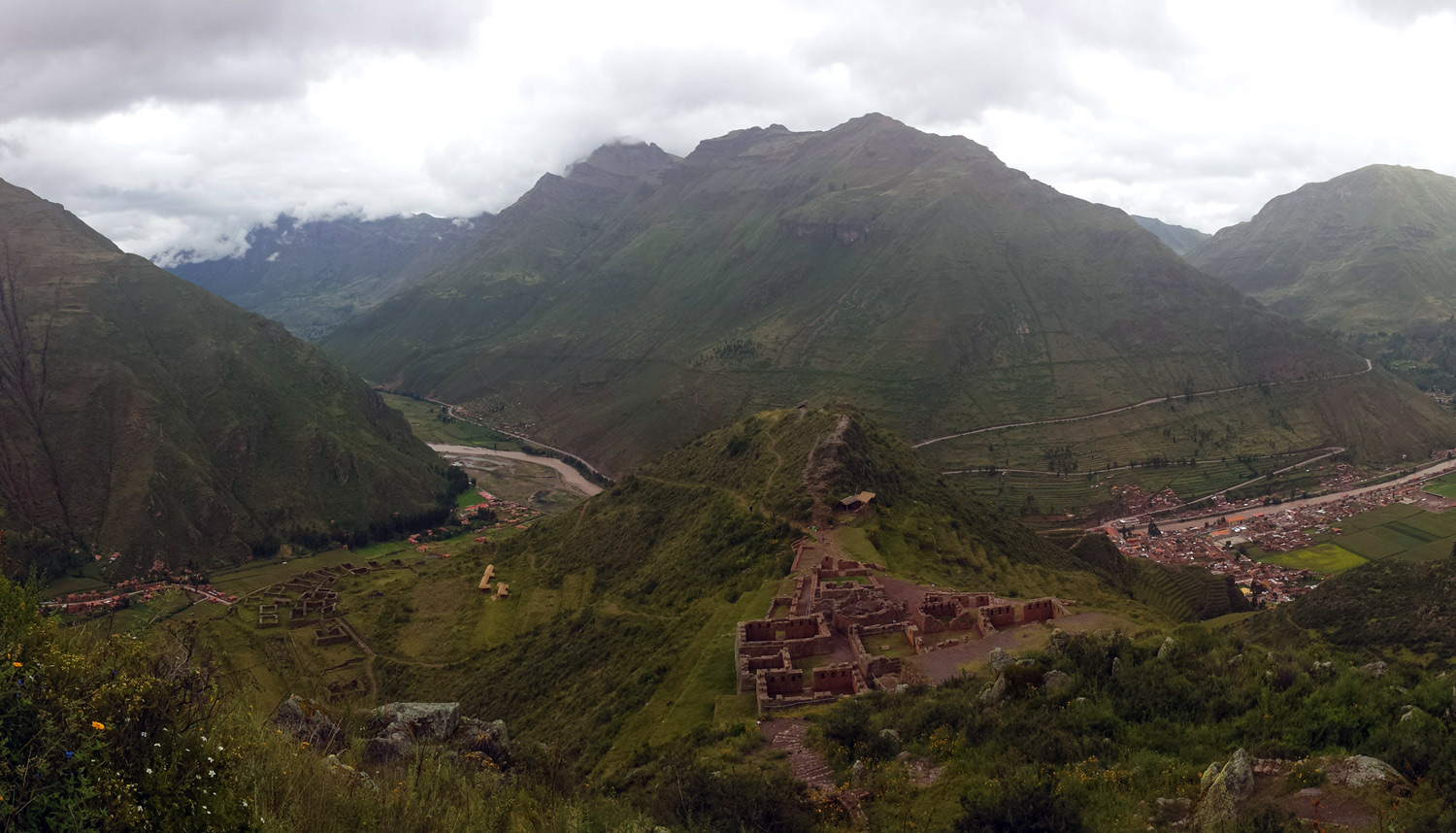
Tours for the Sacred Valley can be set up almost anywhere in Cuzco. If you don’t set something up before you get there you can usually ask your hotel to help. It seems most places have worked out deals with local tour operators and can get you their special rate. Otherwise, there are tour operators all over the place in Cuzco. I would try to book it at least a day or two in advance if possible. Pick one that most suits your needs. You have some room to negotiate the price because there are so many options available. Let them know you are looking around and it will help get you a better deal.
We were able to set something up with GringoWasi, the bed and breakfast where we stayed. The owner Lyle had two options available for us. One was to go with a tour company with which they had special rates and the other was to go on a private tour with him for S/. 200 (US$70). We opted for the private tour with Lyle. This allowed us to plan and schedule our own day. We chose Pisac and Tipon which were two places that it would be hard for us to get to on our own. We bought the tourist ticket which is not always included in your tour.
Our private tour started off with a trip to the Cochahuasi Animal Sanctuary. I was a little hesitant when I first heard about it because I wasn’t sure how the animals ended up here. Turns out, all the animals here were either hurt or recovered from poachers. The cost of admission was your donation to help maintain them.
Some of the many animals we saw included Pumas, Llamas, Alpacas, Eagles, and Condors. All of the Eagles had been rescued from poachers. We also saw a hairless Peruvian breed of dog that I have to admit was a little disturbing.
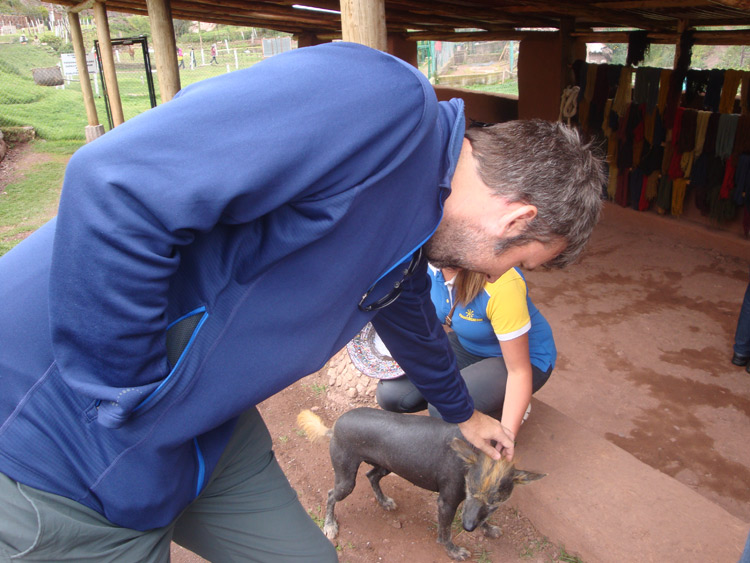
One of the main attractions at the sanctuary, were huge condors. They were trained to fly from a building high above to a hill next to us. You felt really small as these gigantic birds flew overhead. Once at the hill, they would stop for a photo before flying back up to the building.
We watched as a woman worked on a traditional blanket made from Alpaca fibers. One of the guides let us touch the different Alpaca fibers explaining how much softer the baby Alpaca felt and this is why it costs so much more. Later, the more I walked around the markets the more I realized how much they played this up. There were signs at many of the high-end stores stating that their product was made from 100% baby Alpaca. The typical stands use a more mature Alpaca fiber, so their prices aren’t as expensive.
Our first ruin of the day was Pisac at 11,200 feet above sea level. This is much higher than the base of Machu Picchu at 7,970 ft. Pisac has tons of steps, big arches and even a tunnel that Mark didn’t fit through very well. We considered our trip to the sacred valley practice for our upcoming hike to the top of Machu Picchu.
The stairs were huge and the air was thin and dry. We stopped several times to catch our breath. Even the people from the area were gasping by the time they got to the top of the stairs. The key to all of these ruins are to just go at your own pace and stop when you need it. It is not a race to the top. The goal is simply to get to the top and then you get rewarded with wonderful views.
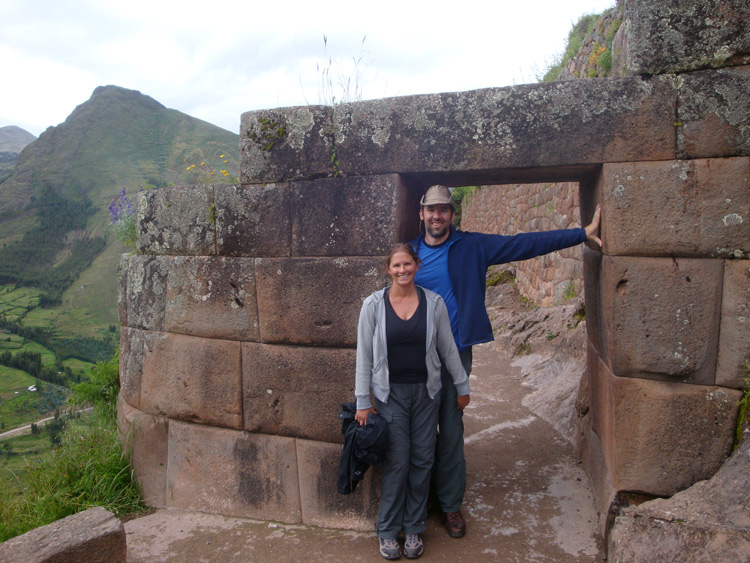
Pisac is known for its great agricultural terraces and the locals still use some of them today. Rich soil was brought from the lands below in able to have an abundance of food at such high altitudes. Little is known for sure about this place. It was believed to be both an Inca religious and military area. Lyle explained to us, that the stones that were perfectly fit together like a puzzle with little dirt in between were places of importance, while the buildings with stones randomly stacked with lot of dirt to hold it together were places for the workers and farmers. We hiked out to the furthest point in order to see the religious site on the far edge with the best views of the mountains. On the backside of the ruins, you can see hundreds of holes dug into the steep hillside. These were once graves that have been ransacked. This is one of the largest known Inca burial grounds.
The town of Pisac is known for their huge market. Mark and I were not in the mood for shopping, so we hadn’t planned this into our day. However, it became a part of our day when we realized we were running low on cash and needed to hit an ATM. We wandered through tons of stands stopping only at a bakery with an 800 year old oven to get a cheese empanada. The dough was delicious, but queso fresco doesn’t melt well. In the middle of the empanada was a big chunk of unmelted cheese. I didn’t really care that it wasn’t melted. The empanadas were under a $1 and made for an excellent snack after climbing so many stairs.
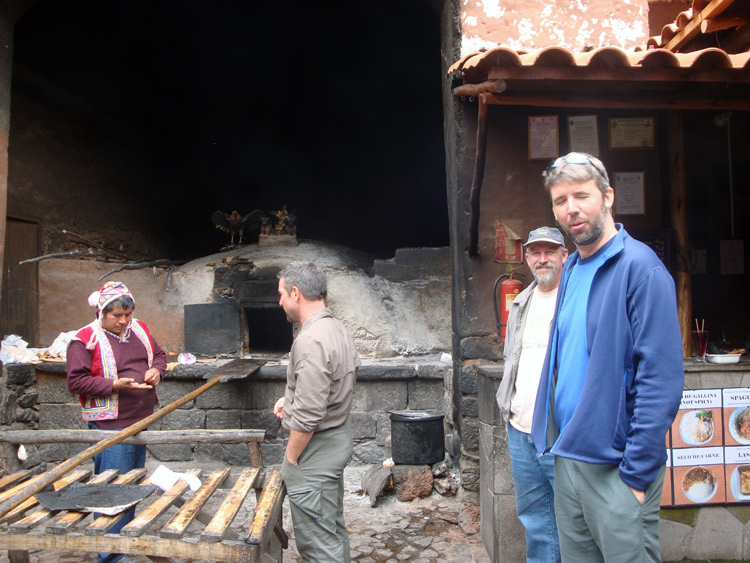
If you are out in the Pisac area and want to go shopping this is a great place. Otherwise, there is a market in Cuzco with similar stuff. Pisac is a ways out and unless you are going to the ruins, I would not waste the trip out just to go to the market when similar stuff can be purchased in Cuzco.
The next ruin we visited that day was Tipon at 9,843ft. It was unique because of all the aqueducts. The terraces are in great condition and water runs throughout the entire place. It is home to one of the largest irrigation systems for terraces in the Inca ruins. We hiked up several steps and hills to try and find the source. A few miles to the top later, we decided it was getting dark and we should probably head back. The canals seemed to go on forever. By the end of the day, we had hiked around 8 miles. It was great being on a private tour because now we could just go home, eat, take a shower and go to bed. There was no hassle with money or dropping off other people. We would just square everything at the end of our trip.
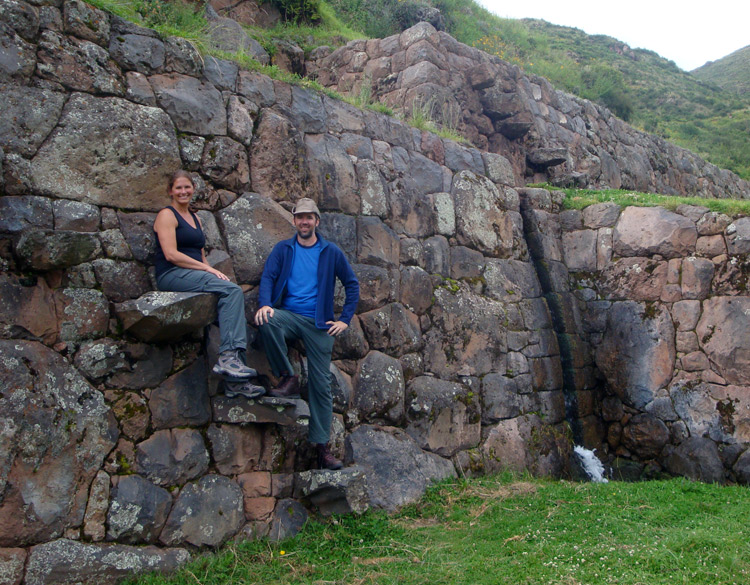
The next day we were headed to Machu Picchu. We were not currently staying in Cuzco, so our best bet in the off season was to catch the train in a town called Ollantaytambo. This is the town you would start in if you were hiking the Inca Trail. That wasn’t an option for us because it is closed for maintenance in the month of February.

Ollantaytambo is also known for its Inca ruins. These ruins are lower in altitude than the others we had climbed at 9,160ft. The breathing was much easier after Pisac and Tipon. The steps were so big it was like two steps in one. The climbing was a little rough for me because I was a little sore from the previous day. Once again, the views were worth it. This was a royal estate and ceremonial site. During the Spanish conquest of Peru this area served as a stronghold for the Inca resistance.
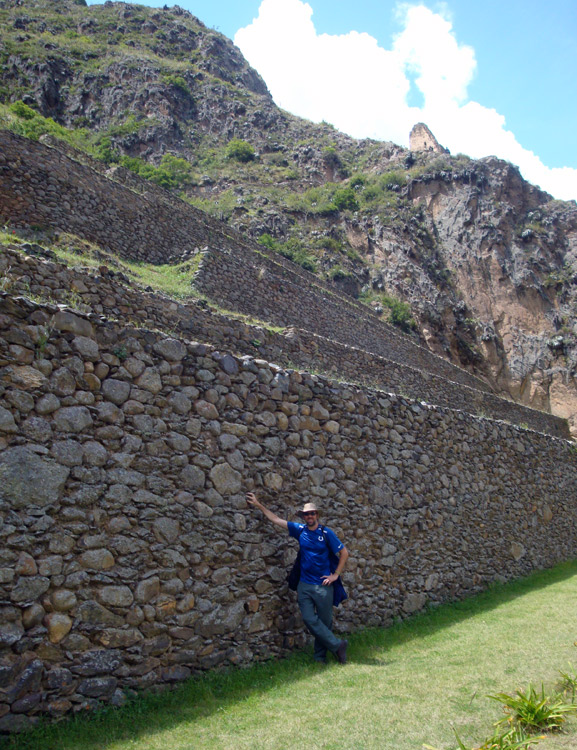
This site is also included on your Cuzco tourist ticket. If you are heading to Machu Picchu and you didn’t by this ticket there are other options. First, you can see the ruins of Ollantaytambo from the town, but you cannot hike them without the ticket. Your other option would be to hike the free ruins in the area. There are ruins on the opposite hills from the main ruins at Ollantaytambo. You can see the paths from the town and there are a few different Inca structures on that mountain you can reach on your own.
Our practice for Machu Picchu was over when we took the last step down from Ollantaytambo. We didn’t have time to climb the ruins across the valley. We had to catch our train to Aguas Calientes, but not before we stopped to enjoy the views of the city with a Pisco Sour. The Peruvian Pisco Sour is made with a base Pisco liqueur. It is a type of Brandy in many different flavors. Peruvians add lemonade or key lime juice, frothy egg whites and bitters to the Pisco to finish the drink. It was delicious and a great way to end one adventure and start the next. We were ready to hike to the top of Machu Picchu. After all, this was the main reason we came to Peru.

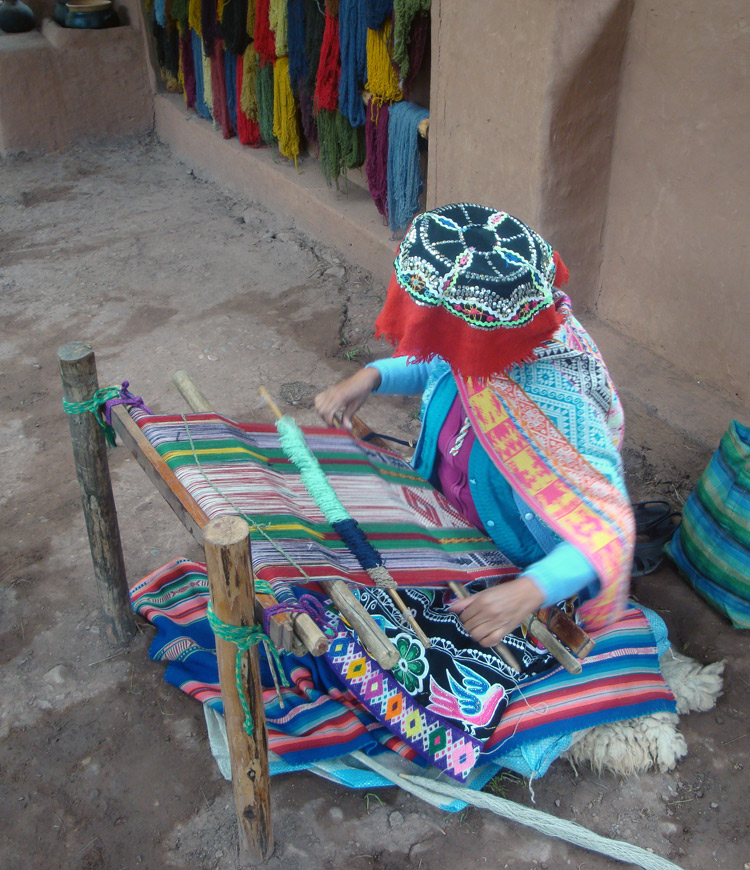
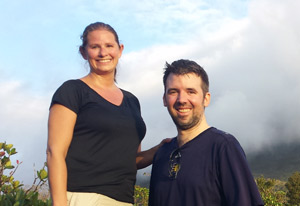
Loving the Beard Mark, and I am in AWE of it all
Ol’ Captain Greybeard. 😀
That panorama of Ollantaytambo is absolutely stunning.
Ollantaytambo was probably my favorite outside of Machu Picchu. The Galaxy S4 does great on sunny days. My pics from Pisac are all overexposed because it doesn’t do well in partly cloudy/sunny. I hope to write a review in the next week or two. Overall I am happy with it but there are some annoying bits.
When you’re in those partly sunny conditions you can use exposure compensation to prevent overexposure. Samsung labels it “Exposure Value” and it’s in the camera settings. Try bumping it to -.5 or -1 (the S4 will adjust +2 to -2).
Wow, there are some really historical sites to see. I think it is amazing the things that have lasted hundreds of years and still in use . You guys are really smart to take this time in your life to get to explore the world together. Way to Cool.
Jerry & Ronda recently posted…The Sacred Valley of the Incas
Thanks. It is all really amazing.
Julie recently posted…The Sacred Valley of the Incas
Hi! I’m loving your great blog posts! I started my RTW blog soon after you guys, so it’s been inspiring and fun to read about people going through it at the same time. Keep up the good work! 🙂
Glad we can help inspire you. I read some of your posts too. No, there are some parts of traveling like this that are not great or fun, but it is worth it. Enjoy your travels! Thanks
Julie recently posted…The Sacred Valley of the Incas
Wow, beautiful and brilliant trail if you are up for an adventure! Sounds challenging but doable.. The sense of achievement at the end must be worth all the eventual discomfort:) Thanks for sharing all the detailed info.
Julie K. recently posted…Movie Review: American Hustle
I love that you measure in meters now instead of feet!!
[…] / Huarocondo / Sacred Valley / Machu […]